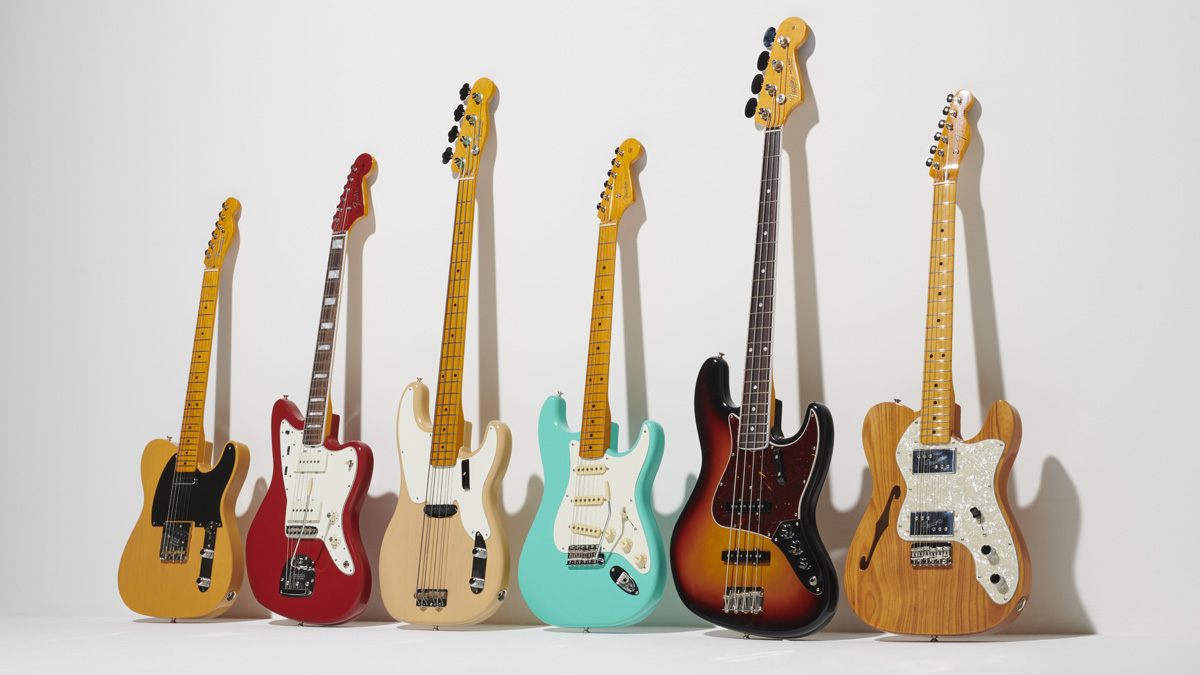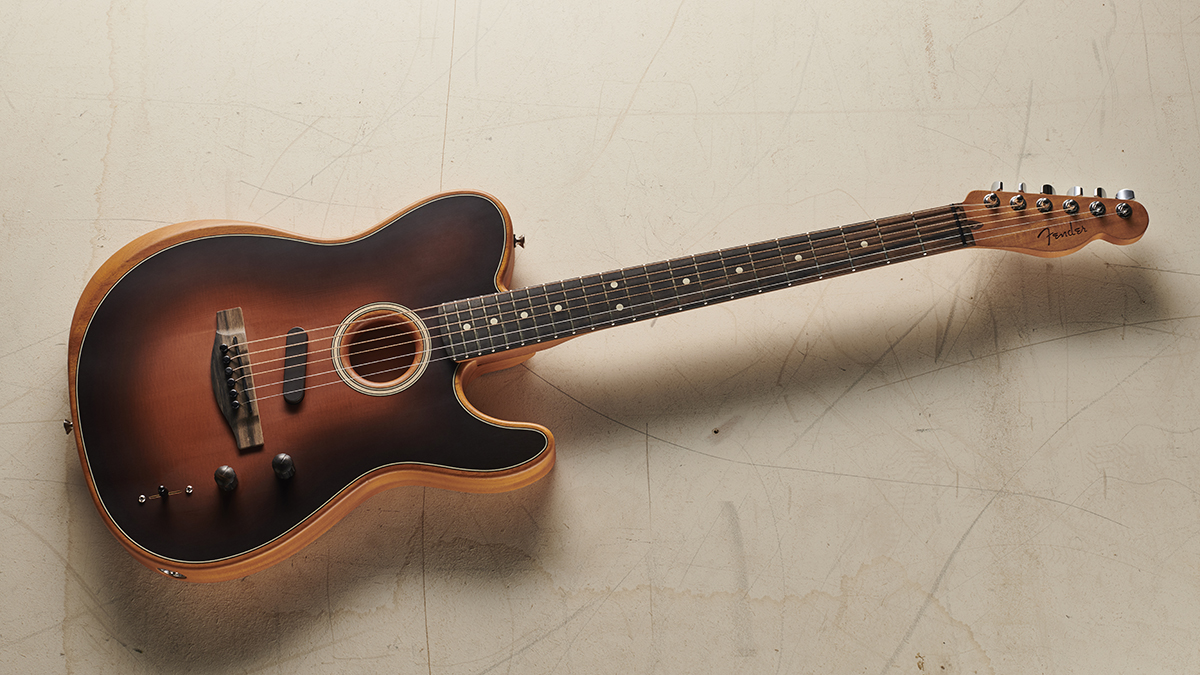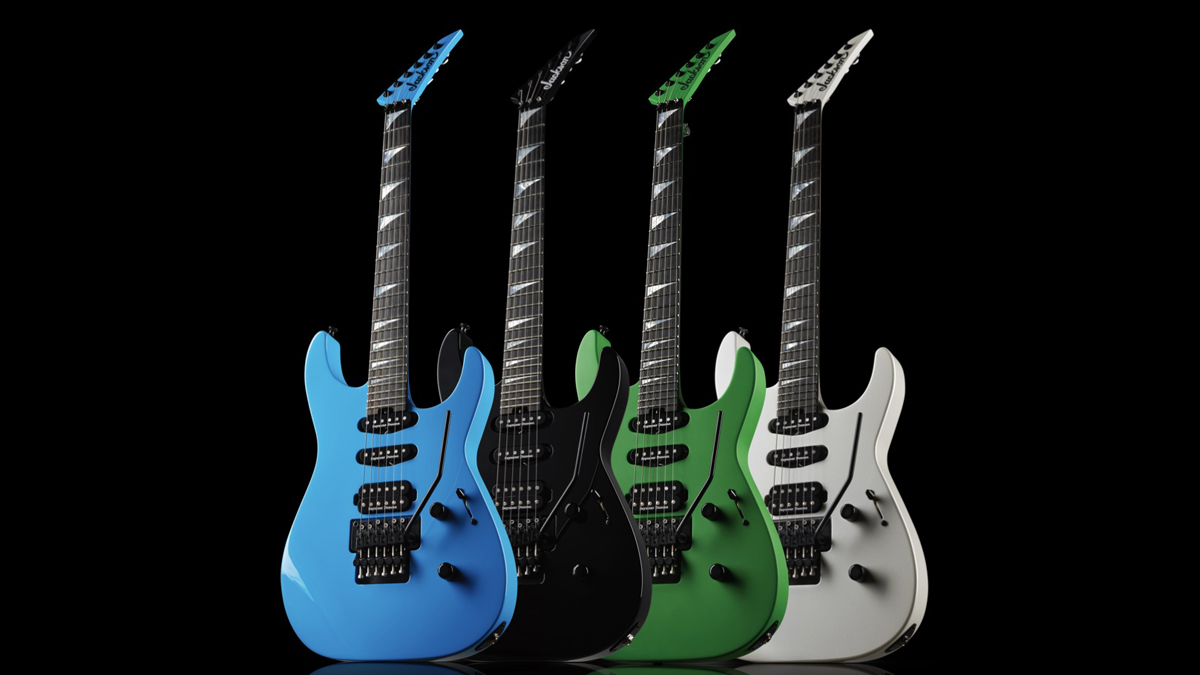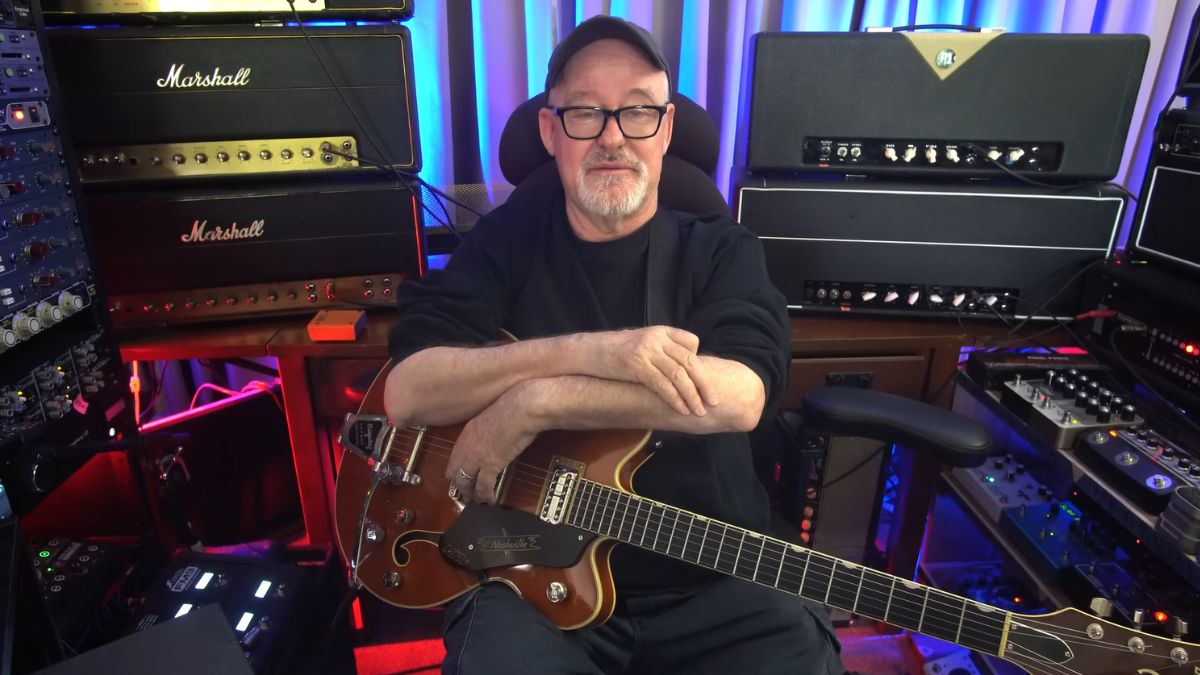Fender CEO Andy Mooney: “I think the guitar today is in a better place than it’s ever been. I’m hugely optimistic about the future”

It’s been a frantic few years for guitar companies, and for Fender especially. The unprecedented guitar boom over lockdown resulted in the firm’s highest sales figures of all time, with its New Guitar Player Landscape Analysis concluding that more than 16 million new players picked up an electric guitar or acoustic guitar for the first time.
But as the pandemic began to fade throughout 2022 and the world returned to relative normality, Fender refused to rest on its laurels, instead plowing on with some its biggest releases since the turn of the decade: the American Vintage II range, the expansion of the Acoustasonic platform with the affordable Player Jazzmaster, the continued rise of its Tone Master digital amp range, and a plethora of signature models across all Fender brands.
All in all, it resulted in what turned out to be Fender’s second-biggest year ever, just behind the record-breaking 2021. Confirmation, then, that the lockdown guitar craze was more than just a blip.
As such, perhaps “frantic” is somewhat of an understatement, but whatever descriptive we assign to Fender’s operations over the past few years, we imagine it won’t be long before we have to think of another: as revealed by Fender CEO Andy Mooney, the brand’s relentless activities are continuing apace into 2023 and beyond.

Mooney, who joined the company in 2015 following stints with Nike and Disney, has helped navigate these uncertain yet lucrative times, and looks to set an agenda for the foreseeable future that will see Fender continue to do what it does best: release highly desirable guitars, appeal to wider audiences and push the boundaries of guitar and amp development into a new age of gear.
It’s a strategy born out from the fact that Mooney believes the guitar is in the best place it's ever been, and one that looks to permeate through all Fender brands, including – but not exclusive to – the recently acquired PreSonus software company and revamped Jackson range.
Speaking to Guitar World from Fender's new Artist Showroom in London, Mooney reflected on the highs of a hectic 2022, and gave some telling insight into the future of Fender, from a potent lineup of new mystery signature artists to a development in the digital amp world that will “blow peoples’ minds”.
All the latest guitar news, interviews, lessons, reviews, deals and more, direct to your inbox!
Last year was a big year for Fender, with the release of the American Vintage II range, the expanded Tone Master collection and the Player Acoustasonic Jazzmaster model. What were the highlights for you?
“The last two years were possibly the two strangest years, at least in my life, but I think in the life of the industry. 2021 was the best year we've ever had in history by any measure. In 2022, the lower end of the market started to normalize, so managing that transition was a bit of a challenge.
“But I think we're largely through that. 2022 ended up being the second best year we've ever had, and this year we’re looking at returning to what I would characterize as manageable, normalized growth. Pre-COVID, we were generally growing in a single-digit, low double-digit, range, and I would expect us to return to that level of growth this year.”
Do you have any favorite releases from the past 12 months?
“Last year I started using Tone Master amps. I have an original Twin Reverb, but I thought, ‘Oh, I’ll try that Tone Master,’ and it’s such an unbelievable amp.
“I think other people are mastering the digital side of the business, but there was always a real distinct difference between a digital reproduction of an analog sound. But the technology has advanced massively. We had a dealer event in the US where we had [Christone] Kingfish [Ingram] play, and he's an old-school tube guy.
“So we set up his backline for him, but we put in a Tone Master instead of a tube amp. He played all night long, and at the end of the set, I said, ‘Go pick this up,’ and he was like, ‘What the hell? No way, there’s absolutely no way.’
“Also, what we're finding with guitar techs – especially now with the shortage of tube supply – is that they are saying, ‘Hey, I'm going on tour, if the tubes break down, my chances of either getting a replacement amp or replacement tubes are so low, I'm just going to take the digital amp.’ And then as they get used to digitals, they are sometimes not going back to the tubes.”
That feeds into the tube amp versus digital debate. Where do you see that conversation progressing?
“Well, I mean, in some ways, it's a little bit of an academic debate because in the end it goes down to personal taste, right? There are some guys that might think the ‘55 Stratocaster was the best Stratocaster that will ever be made, and I appreciate that. But I prefer playing the newer models, with jumbo frets, improved electronics, different neck shapes.
“I like them both but I prefer playing the newer models, and I think it's going to be the same with amps. There's always going to be tube aficionados, and we want to cater to them and respect them, but we have to move the brand forward as well.”
How do you strike a balance between staying faithful to your heritage while also pushing the brand forward and appealing to those modern players?
“I think we can cater to both user groups. One of the things that I learned at Disney is, brands that strike a real emotional chord have the type of history that Fender has, and there are people who really love the history and would like to embalm it. I don't think that's good for the brand, and certainly not good for the business.
Moving forward is woven into the DNA of Fender. Look at what Leo did: he never stopped. You've got to keep moving forward
“The way I try to explain to people as to why it's really important to move forward, it's actually – in both the cases of Disney and Fender – woven into the DNA of the brand.
“If you look at what Leo did, the Stratocaster was a massive movement forward from the Telecaster, then it was the Jazzmaster, then it was the Jaguar – he never stopped. You've got to keep moving forward and going where the artists are telling you you should go, but also be respectful of people who like the original ideas.”

Do you see any patterns emerging between the artists or players that stick to older instruments and those who reach out to try newer ones?
“Not so much, but I think the way that people use guitar now has changed. I remember when The Washington Post headline came out saying, ‘The guitar is dead, the guitar god is dead.’
“The dialog I had with journalists at the time was, for me, I grew up in the era of the true virtuoso. Ritchie Blackmore, Jimmy Page, Jimi Hendrix, and those guys were hugely important and still are today. But for me, the whole industry changed with the emergence of punk in the ‘70s.
The guitar today is in a better place than it's ever been, because it’s used in more ways, more genres, more genders, more geographies
“Then, if you had an ounce of enthusiasm and a pulse, you could go on stage and do something, and I think artists started to use the guitar as a writing instrument, and it became more just a kind of sonic landscape. People got into pedals more, and it was less about virtuosity, and more just about some construction of performance.
“I think that has sustained, and I think the guitar today is in a better place than it's ever been, because it’s used in more ways, more genres, more genders, more geographies, so I’m still hugely optimistic about the future of the instrument.”

Is Fender close to realizing its aims with PreSonus, and what’s the goal for the platform?
“I joined Fender in 2015 and the first thing I wanted was some data on who was playing the guitar, and why they were buying the guitar. So we conducted a pretty comprehensive research project that gave us five insights that really shaped everything we've done over the last seven years.
“After the acquisition of PreSonus, a lot of people – including myself – had opinions on where we should take the brand. Again, we conducted as robust a piece of research on the recording segment as we did on the guitars. I thought the way to expand the recording segment was to make the product simpler and more price accessible, and so people could move up in complexity and price.
“That proved to be true. The part that came as a pleasant surprise is that… Again, my assumption was that the top end of the market, where people are paying a lot of money for very sophisticated DAWs, I didn't think there was much opportunity at that top end, but in fact there's opportunity all over the place.
“The lifetime value of someone who really commits to recording is close to $50,000, which is five times more than a guitar player. But there's this massive, emerging, new creative class that is happy just to post one video, one song and they’re not even wildly concerned about actually monetizing it. They just want to get it out there. Someone who's going to create one song, one time for nine seconds is not going to spend a lot of money on a complicated DAW.
“With PreSonus, we’re very happy with where we’re at, but I view it as just being the very front end of realizing its potential.”
What products from 2022 have you found to be selling particularly well?
“The American Vintage II platform has been a huge success. The return to the original specs was exactly what people told us they wanted. I always like giving people what they tell us they want. That's been the biggest guitar platform success.
“And we still get very high demand for Custom Shop guitars. Generally, in some ways, it's almost as if the higher the end of the guitar, the more robust the demand is.”
How about the Acoustasonic range? The Player Acoustasonic Jazzmaster came out last year. Is that a platform you'll be expanding this year, and will we see a Squier Acoustasonic?
“Absolutely, and in more than one way, without completely spilling the beans. But on the acoustic side, we never branded anything that came out of Southeast Asia as Squier. Where we’re heading is, on the US-made product, in some ways I think it almost needs to be simpler. We want to do what we would naturally do, and have an opening price-point version, with even simpler electronics.
“But we've also taken a lot of input from artists who are really using it, so you're going to see us create signature products on the Acoustasonic range. We're starting to see exactly what we thought at the upper end, and people who really appreciate the instrument are starting to produce it on stage. For us, getting the stage exposure is fundamental to growing the category.
“So we're going to explore both ends of the continuum there, but we're very committed to the Acoustasonic platform. And we're also going to look at different body shapes.”
What body shapes would they be?
“When we first even talked about doing Acoustasonic, my viewpoint was, what an artist would use on stage today – which would largely be Taylor or Martin – was a great acoustic guitar, louder. One voice, louder.
“If you're a very accomplished touring artist with a road crew, you can afford to have six or seven guitars every night on stage. But if you're not, having some flexibility in the electronics was really a benefit – as well as being lightweight, easily playable – and so that was part of the brief.
“That has really struck a chord with people. They really like the tonal flexibility, and the fact that you can use it with effects pedals and get feedback. But the body shapes, as an acoustic guitar, you either love it or you don't. So I think giving people options with a more traditional shape on an Acoustasonic platform is something that we're exploring.”
You've opened the Mod Shop to European customers for the first time and have recently opened a flagship store in Japan. How else are you looking to expand the brand on the retail front?
“So the store that we're opening in Japan has a four-story retail experience in the highest foot traffic portion of Tokyo. The reason we're doing that primarily is because Tokyo has become one of the major tourist destinations in the world, particularly for tourists coming out of mainland China.
“And in Southeast Asia in particular, you're almost not a legitimate brand or a high-status brand if you don't have your own branded store, so this truly is a flagship that I believe will prove the economic model works. Then, the Tokyo store perhaps will be used as a model to create franchise retail throughout Southeast Asia.”

While on the subject, Fender Japan has come out with some of the most unique Fender models in recent years. Is there demand for those guitars outside Japan, and will we see them in the US and Europe?
“What we’ve found with Fender Japan is, there are very specific customers for Fender Japan guitars. Some people really like what I describe as a kind of luxury finish. You know, there's always a lot of lacquer on the necks, and what we found was, generally, the trend here is opposite of that: people want road worn [guitars] with less and less finish on the necks.
“But for the people who love that MIJ finish, that MIJ look, they're rabid about it. So we're going continue to develop MIJ guitars for outside of Japan.
“The other thing that exists in Japan is, I've always said that the Japanese and the German consumers are more alike than anywhere else in the world. They have a scrutiny of the product to make sure every detail is perfect. So whether it's true or not, the Japanese consumer always believes the Japanese product is better than any other product in the world. So our store in Japan will have a whole floor devoted to just MIJ guitars. Price is not a barrier; quality is a barrier.”

2022 was also a big year for Jackson, especially with the release of the US production line Soloist SL3. What has motivated yourself and Fender to expand that brand in the way you have, and how important will it be going forward?
“There were two or three reasons why we did it. We were starting to see increasing levels of demand for US-made Custom Shop Jacksons, but we were also seeing a lot of players who grew up on US-made Jacksons and had migrated to other brands come back. Just from a trend perspective, we were seeing increased demand for this brand but at higher price points and specifically US-made.
“But there was a chasm between those top-end guitars coming out of Southeast Asia and the low end of the US Custom Shop, so we thought there had to be a way for more artists to come into the brand without it necessarily being through signature guitars or the Custom Shop. So far it’s definitely resonated.
It’s entirely possible that we could build Gretsch guitars back in the USA
“The Soloist is a great name, a great platform, and now that we’ve got that platform established I think there are a ton of things we can do with it: color-wise, treatment-wise, specs. It’s a fundamentally solid platform. We’re just going to continue getting better and better.
“We also think it’s entirely possible that we could build Gretsch guitars back in the USA.”
How are you looking to maintain the momentum from 2022 over the next few months, and what are you most looking forward to from Fender this year?
“There’s any number of things. On the signature line, we’ve got a lineup of artists that I think is representative of where the industry and brand is in terms of diversity of the artists we’re going to be working with this year. I think they’re bringing very different audiences and really expanding the range.
What I think will blow peoples’ minds is what we’re going to do next in digital amps
“There’s a lot on the guitar side, but what I think will blow peoples’ minds is what we’re going to do next in digital amps. We’re pretty excited about what’s happening on the digital amp side.”
NAMM is coming up in a few weeks. Would Fender ever consider making a return?
“On the one hand, I never say never, but the biggest trade show that’s in Los Angeles is E3, and this year Sony, Microsoft and Nintendo have all said they’re not going. [E3 has been canceled since this interview was conducted.] What happened was, out of necessity during Covid, people experimented with other approaches and have found that they are actually not only better for the brands but better for the industry.
“In our case, it costs to set up the booth, have everybody there – that’s a substantial bill. What happens during NAMM which always used to make me pull my hair out is, we’d only get to spend an hour with major retailers. We weren’t reaching deep into the organization, and you couldn’t really romance the products or anything.
“So with the online events, what we found was we were reaching 5,000 dealers, we were reaching much deeper into the organization at just a fraction of the price, and we were doing more business.
“And the money that we weren’t spending, we could take that and plow it into demand creation to drive digital traffic into their online stores and foot traffic into their physical stores.
“If NAMM can prove to me why it’s better for the industry, I’ll go back. But at the moment I’m kind of scratching my head as to how we’re going to do that.”
- Head over to Fender to browse the brand's entire range of guitars and amps, and for news on upcoming releases.

Matt is the GuitarWorld.com News Editor, and has been writing and editing for the site for five years. He has a Masters in the guitar, a degree in history, and has spent the last 19 years playing everything from blues and jazz to indie and pop. During his GW career, he’s interviewed Peter Frampton, Zakk Wylde, Tosin Abasi, Matteo Mancuso and more, and has profiled the CEOs of Guitar Center and Fender.
When he’s not combining his passion for writing and music during his day job, Matt performs with indie rock duo Esme Emerson, and has previously opened for the likes of Ed Sheeran, Keane, Japanese House and Good Neighbours.





